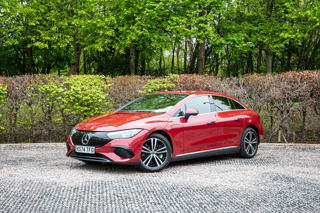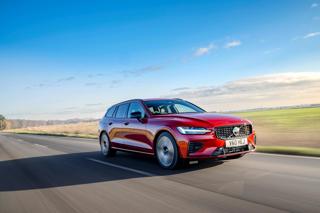Euro6 emissions regulations will see all car and van manufacturers introduce super-clean diesel engines. But how are they achieving the new standards and what will it mean for fleet operators? Sarah Tooze reports.
Diesel has traditionally been seen as a dirty fuel, but EU emissions regulations are helping it to clean up its act.
What is Euro6?
Euro6 more than halves the amount of nitrogen oxides that a diesel car can emit with a cap of 80mg/km. The EU is focusing on NOx because it is one of the most harmful greenhouse gases. It can last up to 150 years – significantly longer than other greenhouse gases.
Euro6 will be binding for the type approval of vehicles as of September 1, 2014, and for the registration of new types of cars and vans as of September 1, 2015.
The regulations cover a wide range of harmful emissions: carbon monoxide (CO), non-methane hydrocarbons and total hydrocarbons, nitrogen oxides (NOx) and particulates (PM).
The aim is to reduce these emissions, thereby limiting the impact on the environment and public health.
Diesel is a bigger culprit than petrol when it comes to these emissions – although it emits less CO2 (not measured by Euro6 as there are separate targets for manufacturers).
Euro4 standards, which were introduced in 2006, saw diesel engines make big strides in reducing the amount of harmful emissions they produce. It would take 35 Euro4-compliant vans to produce the same volume of particulates as one pre-Euro1 vehicle, for example.
The current Euro5 standard took things further, limiting the amount of NOx a car can emit to 180mg/km – a 20% reduction compared to Euro4. But Euro6 is more ambitious.
A number of manufacturers are ahead of the game and already have Euro6-compliant cars and vans on the market.More were unveiled at this month’s Geneva Motor Show.
Meeting Euro6 is relatively straightforward for petrol engines. Ford, for example, will expand the use of its Ecoboost powertrain across more vehicles.
Diesel engines present more of a challenge.
Mazda was one of the first manufacturers to introduce a Euro6 diesel engine. It says its Skyactiv technology has allowed it to improve the cleanliness of its diesel engines without the need for exhaust after-treatment systems.
This has been achieved though weight reduction, reduced compression ratio and more efficient drivetrains.
However, most manufacturers are turning to after-treatment systems such as the Lean NOx trap (which is fitted instead of the normal oxidation catalyser) and the Selective Catalytic Reduction (SCR), which works with a reduction agent (Adblue).
Bosch claims that its Adblue Denoxtronic system can reduce nitrogen oxide emissions by up to 95%. It is a more expensive system than the Lean NOx trap but Bosch says Denoxtronic can help reduce fuel consumption by up to 5%, which offsets the higher cost.
The system isn’t required on small cars, since optimised combustion is sufficient to meet the European NOx limits, so it is generally found only on larger cars, SUVs, and commercial vehicles.
Major van fleet manufacturers such as Mercedes-Benz and Volkswagen have opted for the SCR Adblue system, along with exhaust gas recirculation (EGR) – a system which sees a small percentage of the diesel engine’s exhaust gases being redirected back into the combustion cylinder.
The new Mercedes-Benz Sprinter became the first van to meet Euro6 in all of its engine variants last year. However, meeting the requirements has been challenging, says Andrew Lawson, head of strategic accounts – vans at Mercedes-Benz.
“The main challenge is limiting the weight penalty that goes with an SCR system,” he says. “There is a balance to be found between fuel efficiency and range between Adblue fills and the pressures of maintaining payload.”
Volkswagen is offering Euro6 on selected Crafter models between EU kerb weights of 2,355kg and 2,815kg.
Alastair Hemmings, national fleet manager at Volkswagen Commercial Vehicles, says: “By opting for the SCR system, we are able to offer 114hp and 163hp Euro6-compliant versions of the Crafter.
“This flexibility maintains the Crafter’s performance, while still offering the option for Bluemotion technology to be used on selected 114hp models.”
He suggests that with a full 18-litre tank, Adblue will last approximately 4,200 miles.
Maintenance of the engine is signified by a warning light on the dashboard to indicate to the driver if the tank is reduced to a quarter full. A further warning occurs if the tank reaches minimal levels of Adblue.
Fleet operators who opt for a Euro6-compliant engine that uses Adblue will need to bear in mind the additional cost of the fluid and how it will be topped up (for example, by the driver at a filling station or by a technician in a workshop).
Tank capacities range between 18 and 31 litres and the fluid costs £1.30-£1.40 per litre. A vehicle may need fluid levels topping up 50-100% at a service, although usage is linked to vehicle load, environmental conditions and driving style. The smoother the style, the longer the liquid will last.
When the tank is empty, some vehicles are programmed not to restart until more Adblue is added.
Steve Chambers, SMR costs expert at CAP, says: “Topping-up the diesel exhaust fluid tank could cost at least £20 per company car or van per service once labour charges have been applied. But most motor manufacturers are not highlighting either the cost of the fluid, additional labour or the tank capacity in their published SMR calculations.
“In many cases, fleet managers discover the additional cost only when the vehicle has been serviced and it is highlighted on the related bill.”
With the typical company car undergoing perhaps three services during its fleet life, that could amount to, at a conservative estimate, £60 per vehicle having to be added to a fleet’s SMR budget.
Chambers says: “In many cases it is a hidden cost for fleet managers and therefore an unbudgeted one. On a 100-vehicle fleet with each model undergoing three services, the additional SMR cost could amount to £6,000 and possibly more.”
Mercedes-Benz, which is using Adblue on its Bluetec models, does highlight the cost of a top-up on a model’s first service and a ‘clean and drain’ on a second service.
The cost for a diesel exhaust fluid top up on the Mercedes ML (assuming a 50% top up) is £23.80 (including labour) and £47.65 for a drain and refill.
Lawson says: “Fleet managers will need to ensure that their processes and staff training cover the use of Adblue to ensure the business can operate effectively.
“The key will be making it a seamless part of fleet processes in the same way operators manage their fuel. Driver training is expected to be become more prominent as future technologies develop.”
What is Adblue?
Adblue is a non-toxic solution of urea in water. When injected into the exhaust gas flow, it reacts with the gas and turns nitrogen oxide into harmless steam and nitrogen.
The alternative way of meeting Euro6, the Lean NOx trap, is maintenance-free and doesn’t require additives.
Ford has opted for the Lean NOx trap on passenger cars and light commercial vehicles (up to the Transit Connect).
“It offers the best balance of cost, weight and fuel economy,” says Tim Winstanley, powertrain systems integration manager at Ford. “With a light vehicle, the worst thing we could do was put a lot of weight on it with the urea tank .”
What is a lean NOx trap?
NOx pollutant from the engine is absorbed into the substrate of the trap. The on-board powertrain control module monitors when trap is nearing capacity and schedules a very short rich ‘purge’ reducing stored NOx.
Volvo has opted for the Lean NOx trap (in combination with super cooled high pressure EGR) on its new Drive-E engines.
Anders Agfors, Drive-E project leader at Volvo Car Corporation, says: “This is a maintenance-free system. No customer actions are needed throughout the vehicle’s lifetime.
“The other positive is that it is a compact system solution, with more or less no weight increase, compared to the SCR systems with urea injection.”
However, the Lean NOx trap doesn’t work for all vehicle types. Ford is using SCR Adblue on its heavier commercials because the Lean NOx trap doesn’t work as well at very high temperatures, which the commercial duty cycle can require.
It remains to be seen whether manufacturers will put up prices to cover the cost of the systems required to comply with Euro6. But Ford says that it is “a competitive environment” and that at present it is not passing on the cost.
However, Graham Short, fleet engineer at Anglian Home Improvements, is concerned that Euro6 will ultimately increase running costs.
"My guess is that the cost will be higher than the Euro5 equivalent, so we must continue to run wholelife cost models as alternatively-fuelled vehicles will come more into the equation,” he says.





















James - 25/06/2014 12:13
Great to see harmful emissions being reduced once again. Additionally to the cost of AdBlue, Fleets will need to be mindful that vehicles fitted with 2 catalytic converters will double the risk of catalytic converter theft, as well as potentially doubling the cost of replacement. Seeking out information on suitable solutions to protect vehicles from this type of theft is straightforward and can be found through the vehicle manufacturers / Dealers themselves.